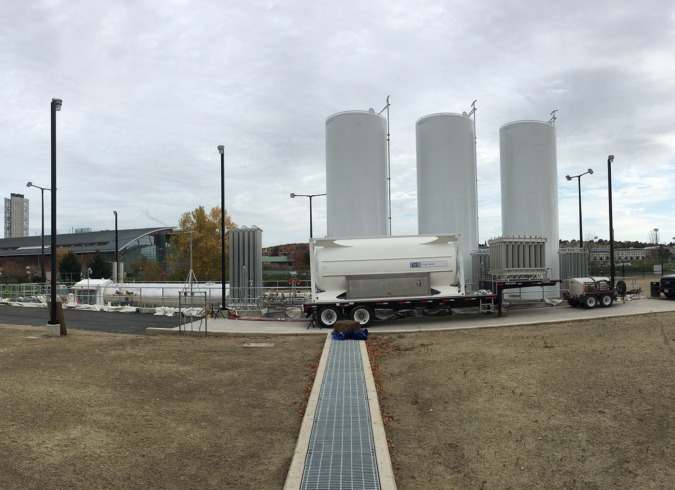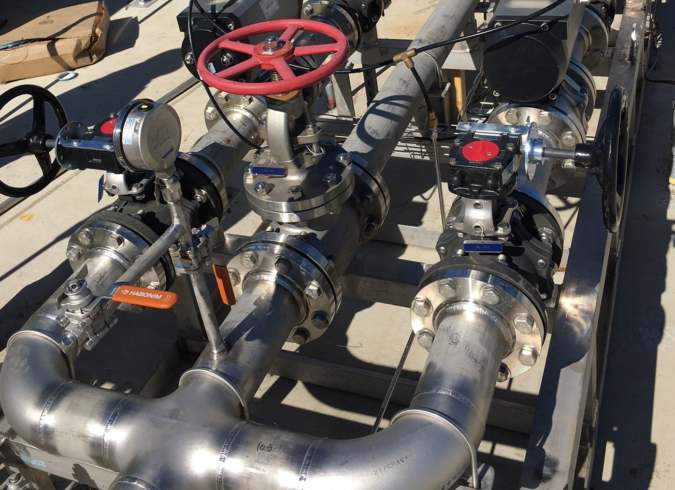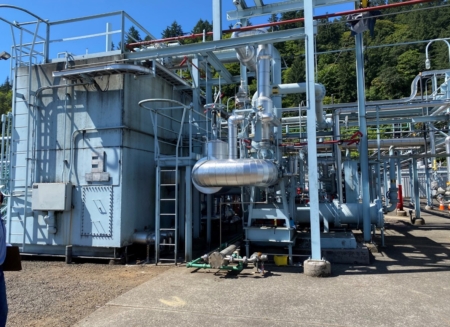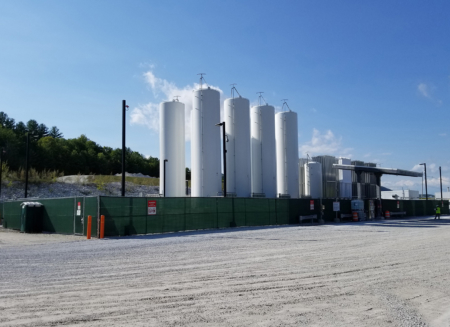Historically, the University of Massachusetts Amherst (UMass) used natural gas as its primary fuel with ultra-low sulfur diesel (ULSD) as a back-up supply to heat the campus. When natural gas pipeline constraints led to increased consumption of higher-priced and less environmentally-friendly ULSD during peak periods, the university implemented a temporary liquefied natural gas (LNG) facility for four heating seasons as an interim solution. Found to be safe and cost-effective, the facility was later made permanent.
Key Components:
- Siting Analysis
- Mechanical, Electrical & Process Design
- Construction Oversight
Sanborn Head was engaged as the lead process design firm for the LNG facility. The project consisted of three 18,000-gallon vertical LNG storage tanks with the ability to add three more tanks in the future, a waterbath vaporizer capable of delivering 175,000 SCFH of natural gas, a truck off-load station and safety systems, which include LNG impoundment areas and an odorization system.
Located on a heavily populated academic campus, the facility’s design needed to account for a wide range of environmental and safety considerations. Likewise, the solution needed to significantly improve the economics of heating the campus and pay for itself through fuel savings.
As part of our siting analysis, our team selected a site that would comply with the regulatory requirements such as proximity to airports, flood zones, fault zones, and other environmental receptors. We also specified regasification equipment, instrumentation, and controls for proper integration with the existing UMass natural gas primary supply from the local gas company.
Now fully operational, the LNG facility supports the continuous operation of the central heating plant and helps UMass achieve its greenhouse gas goals by supplanting previously used ULSD as a back-up fuel supply. The only educational institution in the country to use LNG as a supplemental fuel source, UMass has observed a three-year return on investment, making their decision to construct their own LNG facility not only environmentally friendly, but also economically beneficial too.




